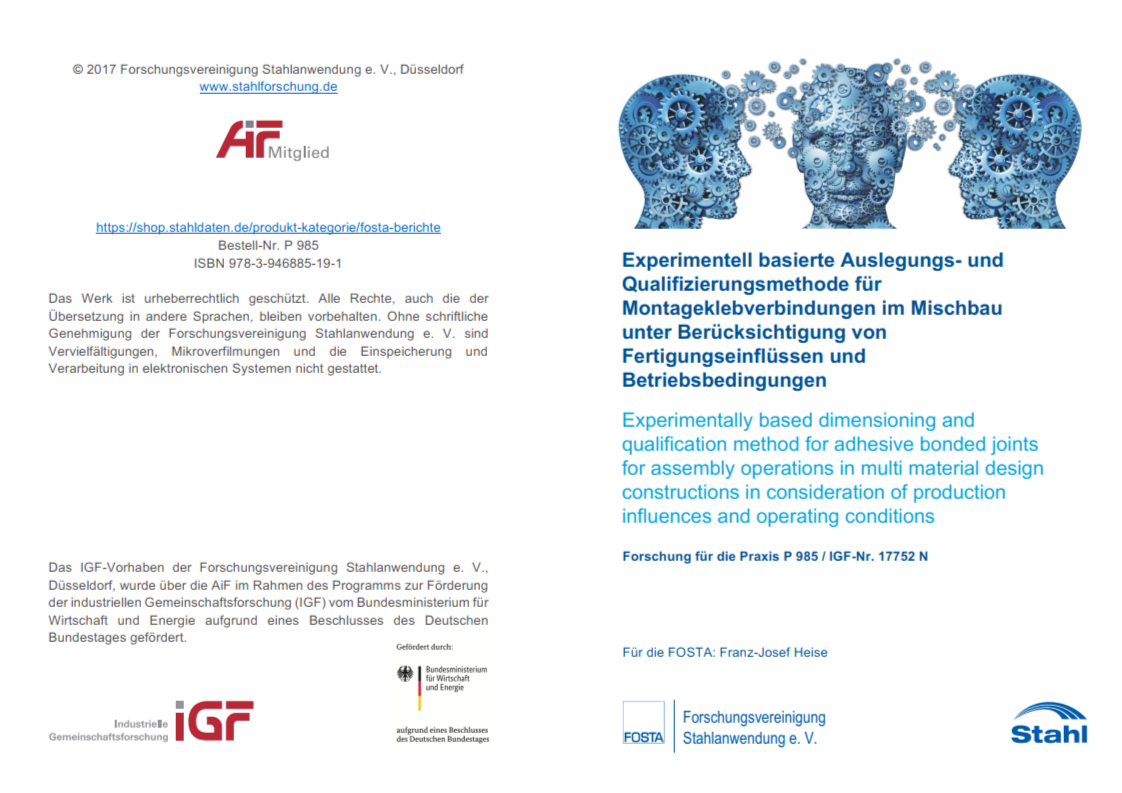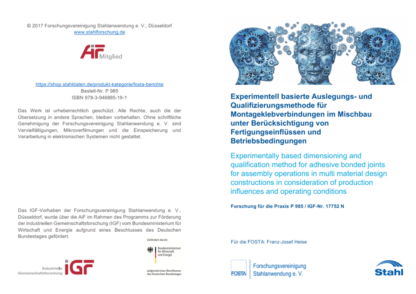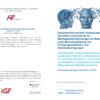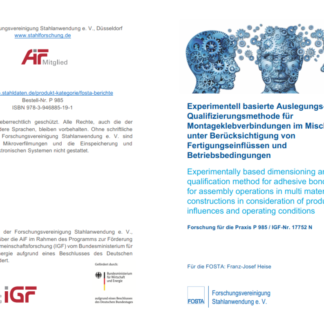Description
P 985 – Experimentally based dimensioning and qualification method for adhesive bonded joints for assembly operations in multi material design constructions in consideration of production influences and operating conditions
The demand for efficient and resource-conserving transport can only be fulfilled through a cost effective lightweight design. Mixed construction can offer manifold possibilities to achieve this objective. The material properties of the different components are specifically utilized leading to a diversified mix of materials. The joining technique is thus the key to successful lightweight designs.
In addition to metallic mixed construction, e.g. steel-aluminum compounds, increasingly fiber-reinforced plastics are used in combination with steels. The use of such innovative materials permits a weight saving compared to previous designs, leading to both reduced fuel consumption and emissions of the vehicles due to the relatively high specific stiffness and strength.
In order to attach the modules to the vehicle structure, cold curing adhesives are used in the assembly process. Multi material joining techniques that are used in adhesive systems are exposed to extremely complex stress states during operation. These stress states are composed of purely mechanical loads, thermal and hydric stress and combined thermo-mechanical stress due to the different thermal expansion behavior of the parts at various temperatures (so-called “Δα-problem”). So far, the combined effects of thermal and mechanical loading of assembly adhesives in operations and the effects of manufacturing tolerances have not been considered in the lifetime of the connections. In the present research project, an analytical model is developed with which the lifetime of the assembly adhesive compounds under different climatic conditions can be defined. Different one- and two-component polyurethane adhesives that are usually used in this area are first tested regarding their diffusion characteristics under changing temperatures. Then the climatic are combined with a static mechanical load. Based on these results, the cyclic test program will be accomplished.
Based on the qualification method that has been developed in the course of this project, steal processing companies should be enabled to optimize their product’s potential of lightweight design by configuring adhesive systems composed of steal and of attaching parts of various materials while considering static and cyclic stress as well as changing climate conditions.
Published in:
2017
Authors:
Prof. Dr.-Ing. G. Meschut, Dr.-Ing. D. Teuenberg, S. Mailänder M.Sc.




